Time travel with us as we examine the oldest surviving railway station in Toronto – Don Station. Part of the Toronto Railway Museum collection, Don is on display year-round at the Museum. Keep reading to discover Don Station’s past. In addition, take a peek at what life was like for those who worked there.
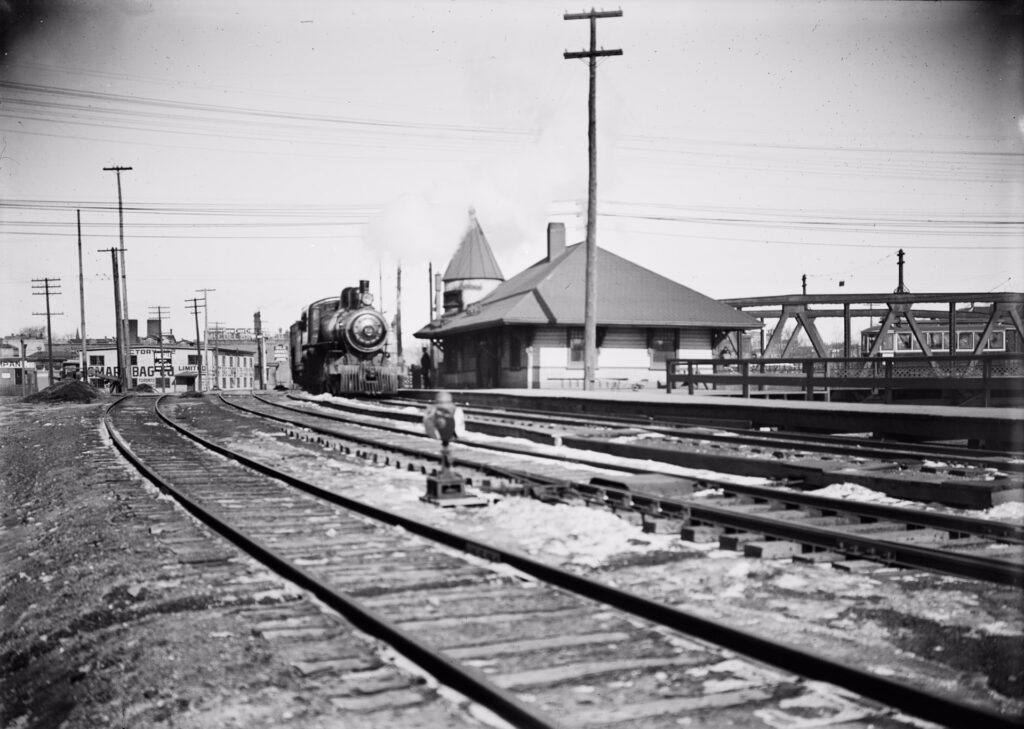
Don Station: Last Station Standing
Don Station is the last nineteenth century train station standing in Toronto. Built in 1896 for the Canadian Pacific Railway, Don Station was originally situated on the bank of the Don River. This is near where the Queen Street Bridge is today.
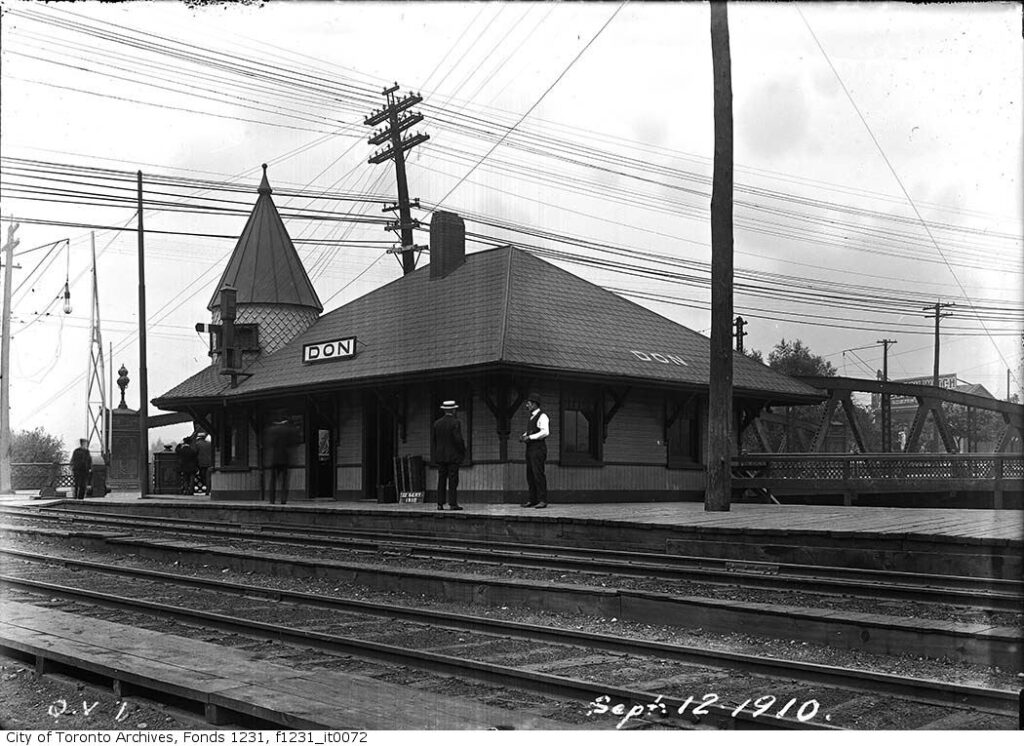
Right: Don Station, 1910. Toronto Archives Fonds 1231, Item 1079.
Above all, Don Station served Torontonians who lived in the east end of Toronto. It was the first stop traveling east after Union Station. After that, it closed in 1967, the station was moved to Todmorden Mills in 1969. In 2008, it joined the museum’s collection and was fully restored to its former glory (more on this in part two of this blog series, coming soon!).
Keeping Toronto Moving
Don was an important hub for the rapidly growing east end of Toronto, especially as the old Union Station was becoming overcrowded. The structure is a great example of Victorian architecture. It is primarily made of wood and has an ornate turret at one corner. Moreover, it was built as part of the Canadian Pacific’s Don Branch, which connected Leaside with downtown Toronto. Up until the Don Branch was built, Canadian Pacific had to reverse their trains through Parkdale to enter the city. This was very dangerous due to the amount of railway crossings there.
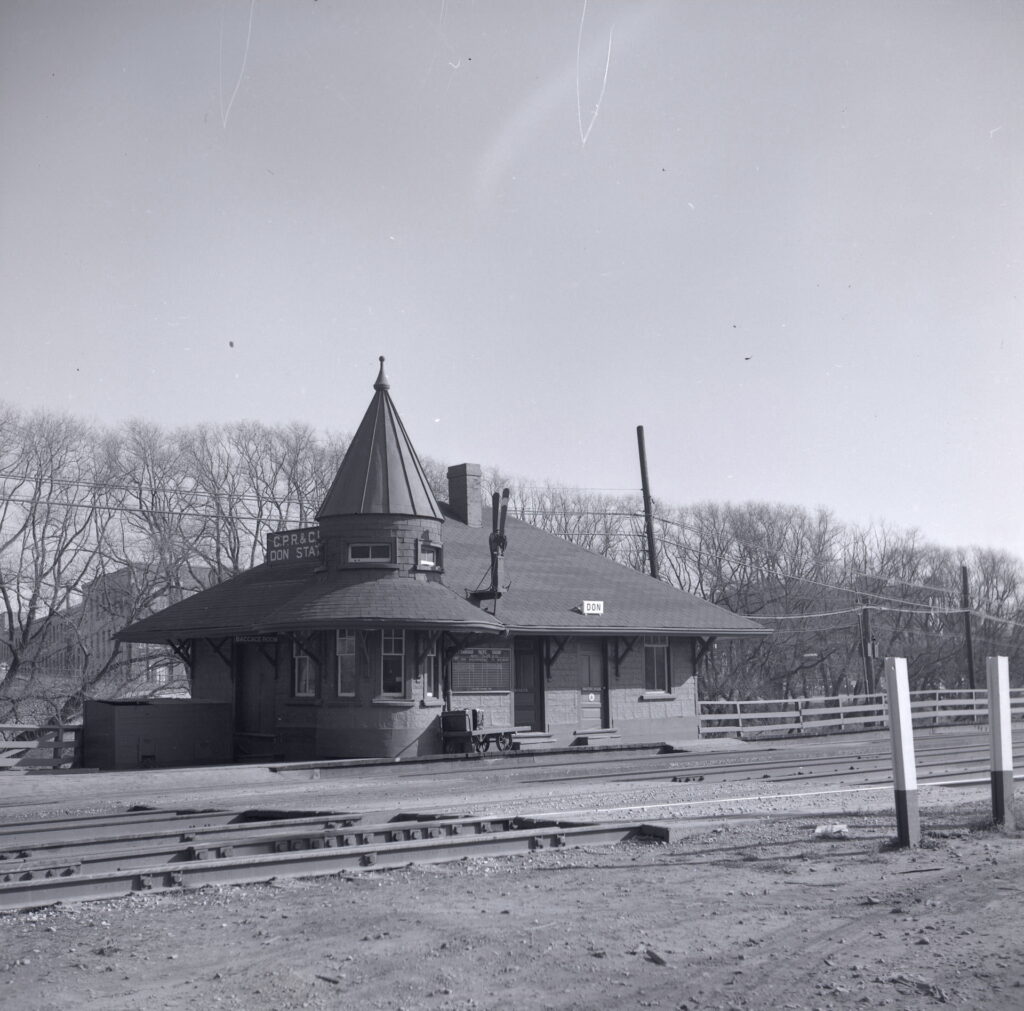
Lack of Ridership
Don Station became less important during the Great Depression due to the CPR and CNR Pool Train Agreement in 1933. This agreement allowed CPR trains to use CNR tracks in light of the economic situation of the time. Regular train service returned once again during and after World War Two, during a time known as the “Golden Age of Railroading”. Beginning in the 1950s, the station became a stop for Canadian Pacific’s “Dayliner” Budd Rail Diesel Cars between Toronto and Havelock. By 1967, the Dayliners stopped calling at Don Station due to a lack of ridership. After that, the building was moved to Todmorden Mills Heritage Site in 1969.
Don Station in Operation
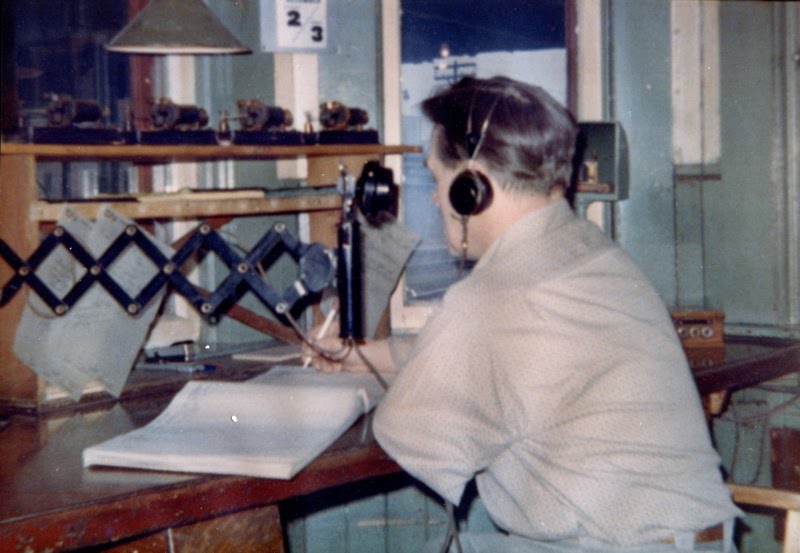
From 1896 to 1967, train tickets were sold inside Don Station to destinations throughout Canada and the United States. In addition to ticket sales, one of the station operator’s most important jobs was issuing train orders to passing trains. Station operators also maintained communications via telegraph with the rest of the vast railway system. The operator’s desk was set into the bay window under the turret. Consequently, they had a 180-degree view of the tracks in both directions.
Middle: John recreating the 1965 photo inside the station after it was moved the the Museum, 2008.
Right: John inside Don Station, 2010.
John Mellow is a Museum volunteer who worked as a train-order operator at Don Station in the mid-1960s. In this 1965 photo, Don operator John Mellow works at his desk and hoops up train orders to a passing train (see image below). Four decades later, John would be involved with the restoration of the station after its move to the Museum.
“OS Don: Recollections of a CPR Telegrapher and Train-Order Operator”
John’s new book “OS Don” is the story of the author’s early years working for the Canadian Pacific Railway in southern Ontario. In other words, “OS Don” gives readers a 1960s front row seat to the Canadian railway industry’s transition from traditional Morse-code telegraphy and train-orders to the present age of computer-assisted operations.

Mellow’s career as a train-order operator began at Toronto’s Don station in 1963. Before recalling his own experiences there and elsewhere on the CPR, he presents the history of the structure and its role in the operations of steam and diesel era CPR and CNR trains through Toronto’s scenic Don Valley. Copies are available through the museum gift shop here.
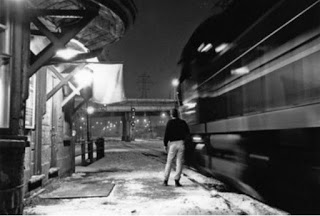
Stay tuned for part two of this series about Don Station. Next, we will look back at the station’s eventual move to the Toronto Railway Museum, as well as the restoration process (with lots of photos!). Subscribe to our newsletter be notified of new blog posts!
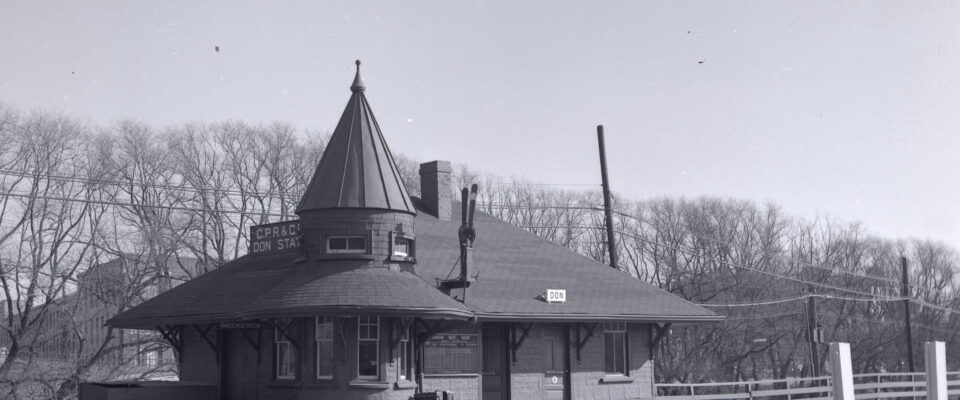
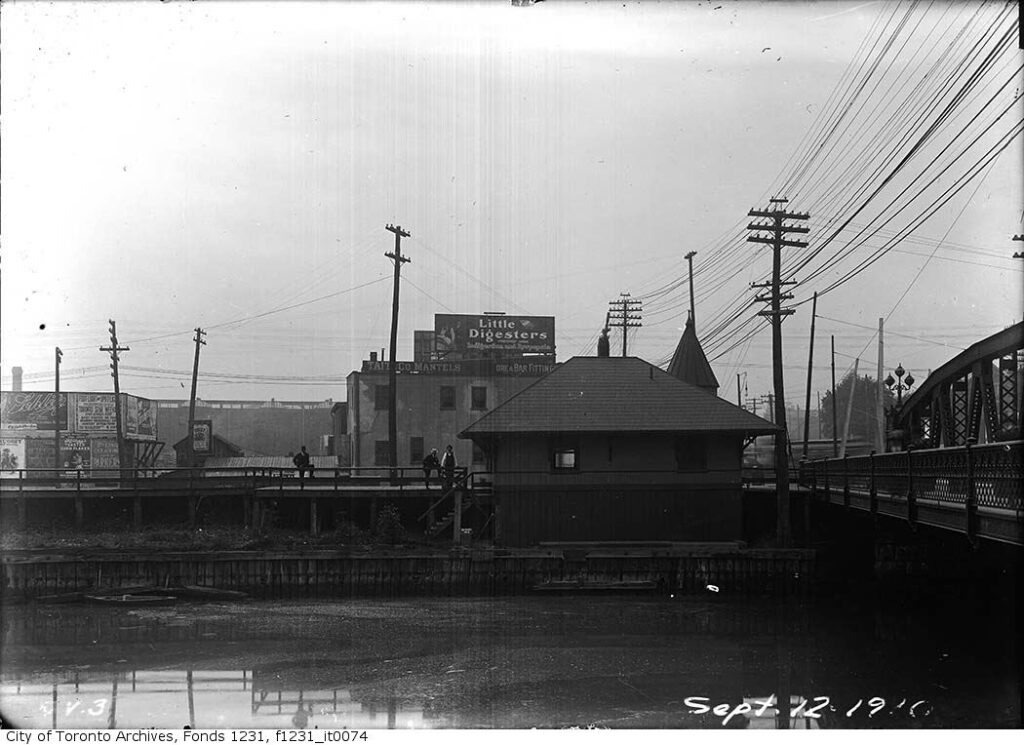

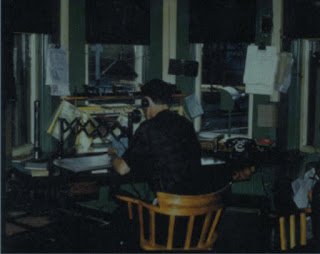
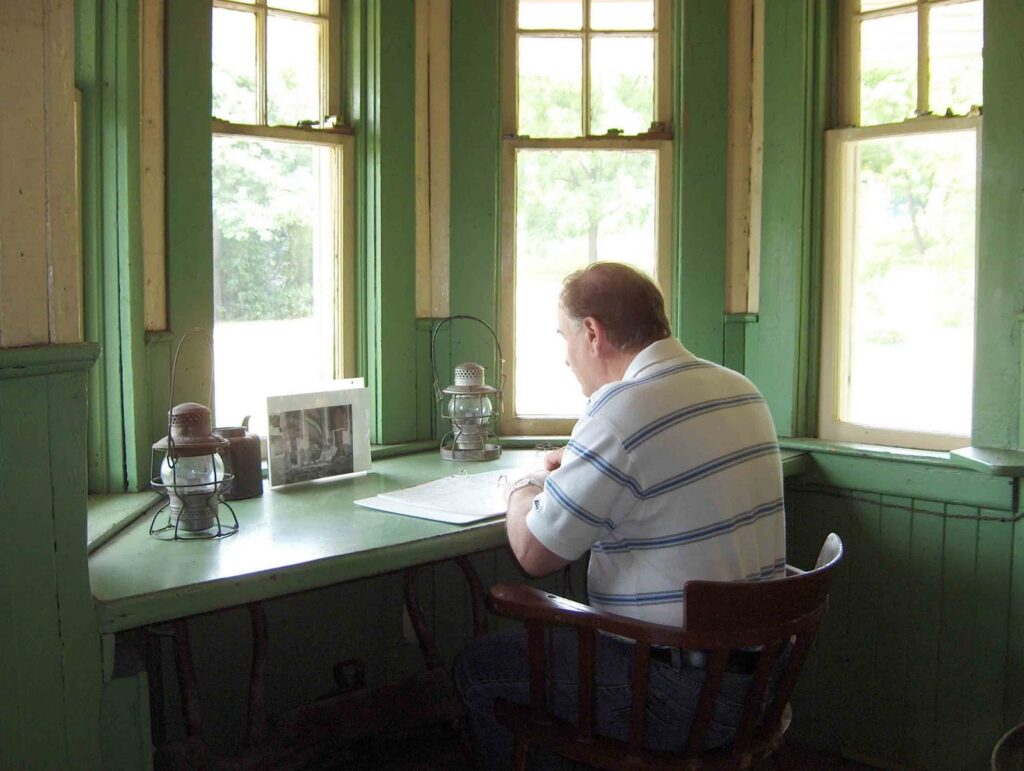
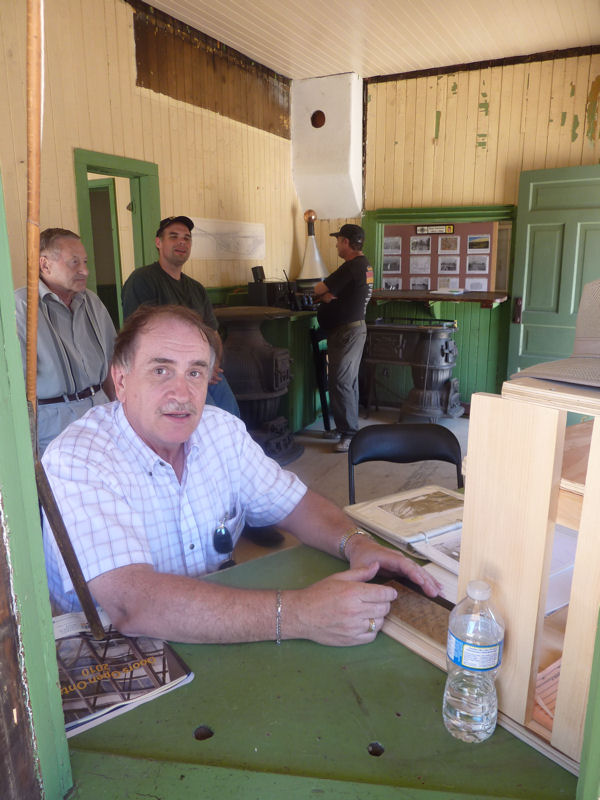
An interesting side note: The station was moved to Todmorden Mills on the advice of Charles Sauriol. Sauriol was a great fan of trains. From 1951-1961 he organized steam locomotive excursions to Niagara starting from the Don Station as fundraisers for the Don Valley Conservation Association. This was a precursor to the Metro Toronto and Region Conservation Authority.
When the Don Station resided at Todmorden Mills, they also installed a boxcar beside it on a short set of railway tracks. Unfortunately the boxcar was set on fire by vandals and destroyed. All that was left was the tracks beside the station.